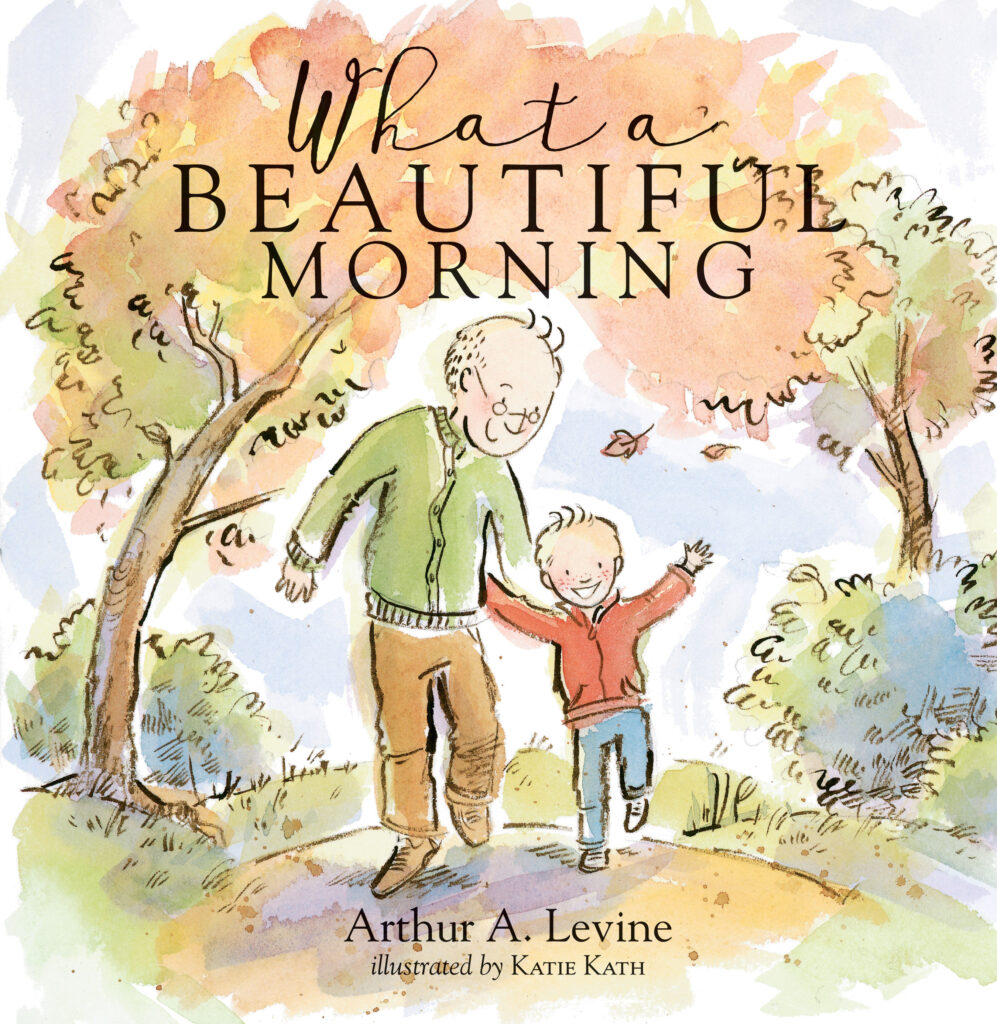Arthur Levine is well-known as the co-editor of J.K. Rowling’s Harry Potter Books, and his role as editor and publisher of Arthur A. Levine Books, an imprint of Scholastic Inc. Arthur is also a picture book author. His recent release is WHAT A BEAUTIFUL MORNING (Running Press) illustrated by Katie Kath portrays the loving relationship between a young boy and his grandfather. I first met Arthur on a panel discussion about Jewish books for kids on Heidi Estrin’s podcast, The Book of Life. I was excited for the opportunity to ask Arthur a few questions about his work, Jewish books, and diversity. Arthur’s enthusiasm for children’s books is palpable and his insights are meaningful to readers, writers, educators, and librarians. I’m delighted to welcome Arthur to Jewish Books for Kids.
There is an ongoing discussion about what makes a book “Jewish.” What are your thoughts about what defines a Jewish book?
I suppose I would hesitate to use the phrase “Jewish Book” because a) books are not people and therefore can’t have religion themselves (or race or culture or sexuality for that matter) and b) I think the implication is that such a book would appeal ONLY to Jews, and I think a good book has meaning for everyone. I would instead talk about a book that explored Jewish life, or Jewish values, or that presented a Jewish character, or a Jewish family in an interesting and exciting way. (All of which I hope answers the question about what I think defines a book with significant Jewish content.)

Where do you see Jewish children’s books in terms of the need for diverse books? What would you like to see explored more in Jewish books?
The movement to diversify what’s available for young people of all races, religions, backgrounds, economic status, ability, sexuality and more is a hugely important and significant effort. We in the movement often quote Rudine Simms Bishop and her articulation of the idea that books can serve both as windows and mirrors for readers. We listen and empathize when people express how painful it was to grow up without seeing “people like me” in the books they read. And we are trying to change that. Jewish children deserve to see themselves in books. If the so called “default” for characters has been straight, white, cisgender, etc. we must (if we’re being honest) acknowledge that it’s also been Christian. So what I’d love to see more of are beautiful works of contemporary fiction where the characters are visibly Jewish, and I’d like to see stories that reflect the huge DIVERSITY of Jewish life in the United States from socially, politically active liberal Reconstructionists to Modern Orthodox in tight suburban communities within multicultural towns like Teaneck, NJ, to nonwhite Jewish immigrants, etc.
Your new picture book, WHAT A BEAUTIFUL MORNING is the moving story of Noah and Grandpa, who navigate (along with Grandma) the changes that occur as Grandpa’s memory begins to fail. The tender family relationships reflect Jewish values. Is this something you were cognizant of when you wrote the story?
WHAT A BEAUTIFUL MORNING was a book I wrote out of pain and sorrow as I watched my father lose his memory, and I watched my son struggle with it as I was struggling. I wrote it to express myself and maybe to give my son and others going through this loss some sense of comfort. And because the characters are so closely inspired by my family — my mother, my father, myself, my son — it couldn’t help but reflect the Jewish values I grew up with. Yes, I’d like to think one can identify gemilut hasadim in the way these characters behave toward one another. I hope one could talk about the book and about Tikkun Middot at the same time. But I was writing the story as a story first and foremost.

As a publisher, are there unique challenges when considering manuscripts about cultures/religions/ethnicity, etc that may not be familiar to you?
I react to manuscripts as a reader. So if a story is written well enough it should move me, whether I’m familiar with the cultures/religions/ethnicities represented or not. Indeed, those details of character and culture are what add richness and depth to a story, and I delight in both the connections I can make between my experience and a character’s, and the differences that come through. Of course, if the culture represented is different from mine I will have to rely on the author as well as feedback from a sensitivity reader to make sure my lack of information doesn’t result in my missing something vital.
Arthur, thank you so much for visiting!
What a great interview! Thank you!.
Great interview Thank you for sharing.
Thank you for visiting!